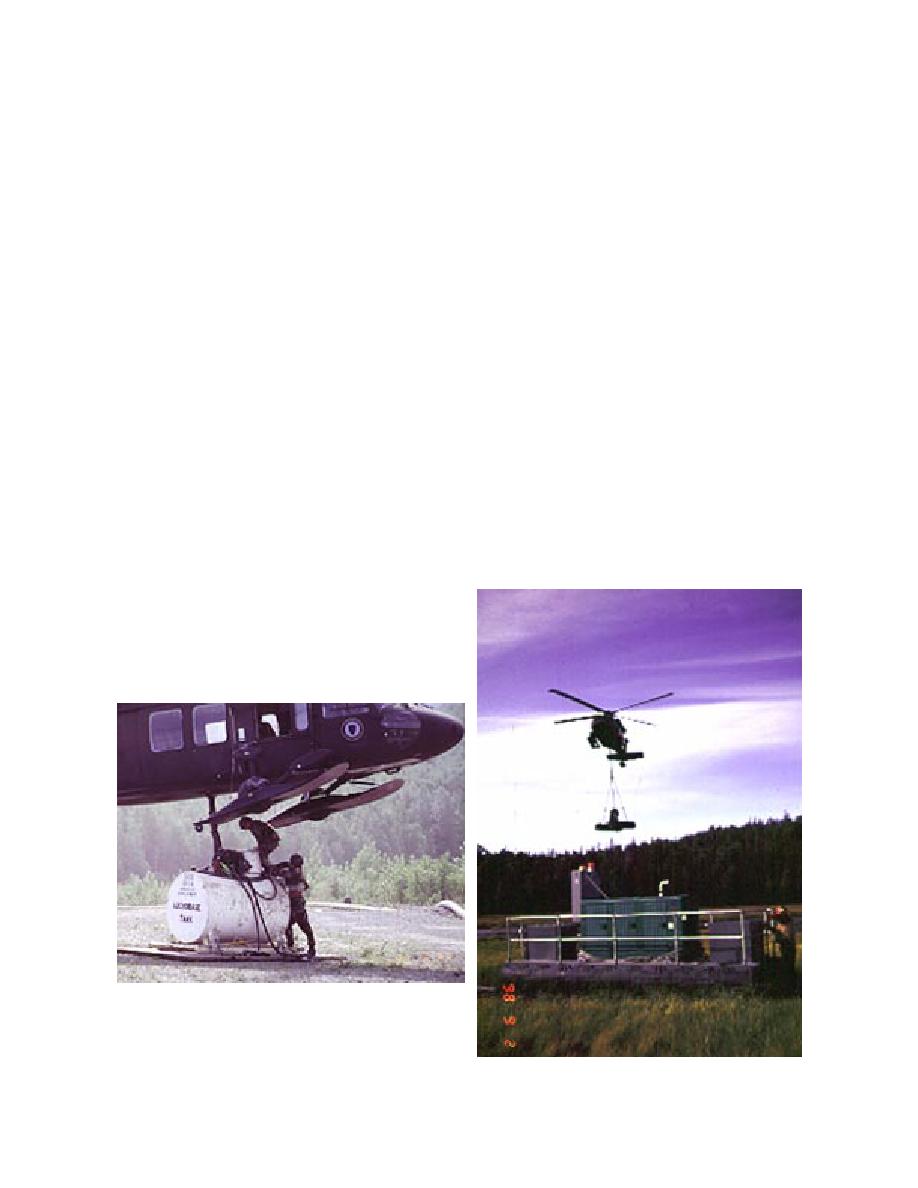
all utilized check valves in the discharge lines to
stored on the EOD Pad adjacent to ERF. The remain-
minimize backflow. System 3 discharged directly
der of the equipment is being stored in a yard on Ft.
into Eagle River, system 5 discharged into Otter
Richardson, 8 km from ERF. The hose is under cover
Creek, and the remaining systems discharged into
to prevent ultraviolet radiation damage.
the nearest drainage gully. Discharge points are at
least 10 m beyond any existing gully headwall to
Results
reduce erosional advancement of the headwall.
Initial deployment--1997
In addition to the tide gate installed in B-gully
Overall performance of the pumping system in
in 1997, three additional tide gates were installed
Pond 183 during the 1997 field season was much
at the northern end of Pond 183 in Area C. These
better than originally predicted. Post-flooding
tide gates prevented flooding during a 9.54-m
drawdown time after some natural drainage is
(31.3-ft) tide in June. A tide of the same height
approximately three days. If two days are allowed
flooded the area in August from the south, where
for natural drainage and another day is allowed
the river, at a high level, overflowed its banks and
for residual drainage, total time required for
infiltrated the area. However, the pond was
drainage is less than a week following the last
pumped out within a day, and flooding would
flooding event in a series. Flow between Pond 146
have been very limited except that one of the gen-
and Pond 183 via the dredge channel was minimal
erators had run out of fuel and another was shut
after drawdown, and during part of the summer,
off. Area A did not flood during either of these
there was no flow at all between the two pond sys-
events, so the use of flood gates should prove to
tems. It was hoped that with the tide gate deployed,
limit flooding of the southern Area A ponds at
some flooding events could be avoided altogether,
even higher tidal levels.
thus eliminating subsequent flooding and pump-
In late August, the systems were shut down
ing of the area being treated. Proof of this hypoth-
and the components retrograded by helicopter to
esis would have to wait until the following season,
shore. Pipe was once again flown out with a com-
mercial Huey helicopter and the heavy equipment
was flown out with a Blackhawk (Fig. 10). The
total flight time required to remove the five off-
shore units plus two 1,900-L double-walled fuel
tanks was less than 2.5 hours. All equipment
except the pumps, gensets, and hose are being
a. Riggers hooking up fuel transfer tank.
Figure 10. Airlifting pump equipment.
b. Airlifting pump.
14



 Previous Page
Previous Page
